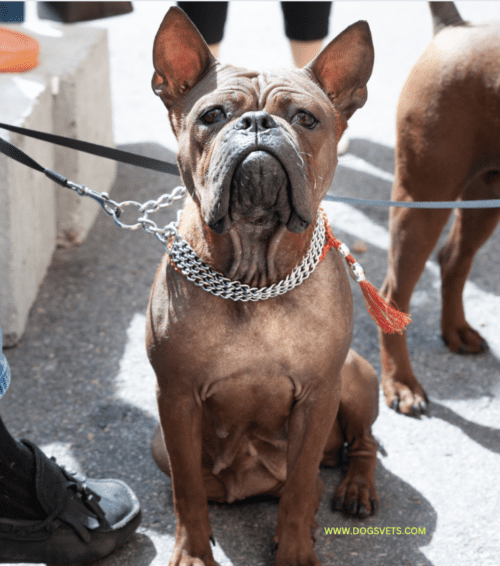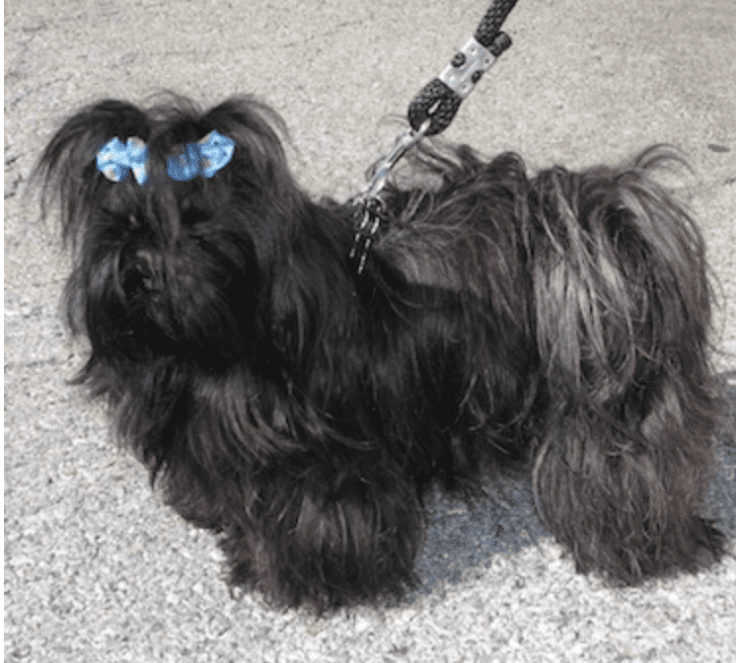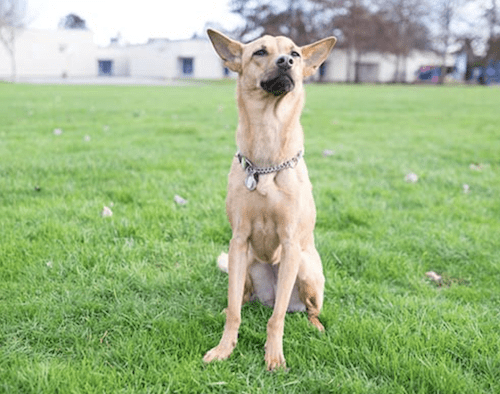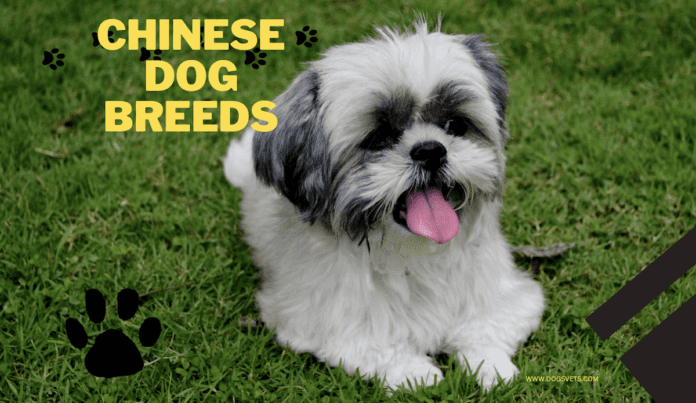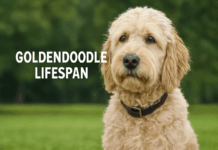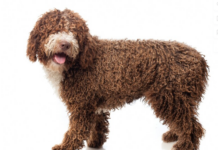Last Updated on January 18, 2023 by Dogs Vets
Chinese Dog Breeds: Discover the Fascinating World of Chinese Dog Breeds:
15 Unique Chicken Dog Breeds, Characteristics, Care, and Training Tips”
Dog Breeds That Originated From China
Chinese Dog Breeds: China is known for its rich history, culture, and diverse landscape. But did you know that the country is also home to some of the world’s most unique and fascinating dog breeds?
From small lap dogs to large hunting breeds, China has a wide variety of canines to offer.
In this blog post, we will take a closer look at 15 of the most interesting dog breeds that originate from China.
#1. Shih Tzu
The Shih Tzu is a small, toy-sized dog that is known for its long, luxurious coat.
These dogs are typically 9-10 inches tall and weigh between 9-16 pounds. They come in a variety of colors, including black, white, brown, and gold.
Shih Tzu’s are known for being friendly, outgoing, and affectionate. They make great companion dogs and are well-suited for apartment living.
Health & Lifespan:
The Shih Tzu is a small, toy-sized dog breed that has an average lifespan of around 10-16 years.
However, with proper care and regular veterinary check-ups, some Shih Tzu’s can live well into their late teens.
Factors such as genetics, diet, exercise and overall health can all play a role in determining a Shih Tzu’s lifespan.
It’s important to provide your Shih Tzu with a healthy diet, regular exercise, and preventative healthcare to ensure they live a long and happy life.
Regular vet check-ups, vaccinations and early detection of any health issues, can also help to increase the chances of a longer lifespan.
#2. Pekingese
The Pekingese is another small dog breed that originated in China. They are also known as the Chinese Palace Dog, is a small, toy-sized breed that is known for its long, luxurious coat.
They are slightly larger than the Shih Tzu, measuring between 6-9 inches tall and weighing between 7-14 pounds. Pekingese’s have a distinctive lion-like mane of fur around their head and neck.
They come in a variety of colors, including black, white, and brown. These dogs are known for being independent and stubborn, but also loving and loyal to their owners.
Health & Lifespan:
The Pekingese is a small, toy-sized dog breed that has an average lifespan of around 9-14 years. However, with proper care and regular veterinary check-ups, some Pekingese can live well into their late teens.
Factors such as genetics, diet, exercise, and overall health can all play a role in determining a Pekingese’s lifespan.
It’s important to provide your Pekingese with a healthy diet, regular exercise, and preventative healthcare to ensure they live a long and happy life.
Regular vet check-ups, vaccinations, and early detection of any health issues can also help to increase the chances of a longer lifespan.
Some common health issues that Pekingese are prone to are breathing difficulties, dental problems, and chronic dry eyes.
It’s important to have regular veterinary check-ups to detect and treat these issues early on.
3. Chinese Crested
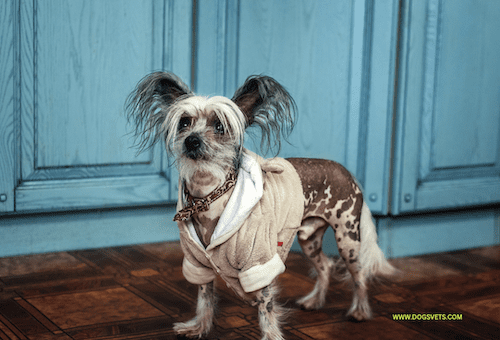
The Chinese Crested is a small, hairless dog breed that has a distinctive crest of hair on the top of their head, tail, and legs. They are typically 11-13 inches tall and weigh between 5-12 pounds.
These dogs come in two varieties: hairless and powderpuff (with a full coat of hair). They are known for being energetic, affectionate, and good with children.
Health & Lifespan:
The Chinese Crested is a small, toy-sized dog breed that has an average lifespan of around 13-18 years.
However, with proper care and regular veterinary check-ups, some Chinese Crested can live well into their late teens or early twenties.
Factors such as genetics, diet, exercise, and overall health can all play a role in determining a Chinese Crested’s lifespan.
Regular vet check-ups, vaccinations, and early detection of any health issues can also help to increase the chances of a longer lifespan.
It’s important to provide your Chinese Crested with a healthy diet, regular exercise, and preventative healthcare to ensure they live a long and happy life.
Some common health issues that Chinese Crested are prone to are dental problems, skin allergies, and eye problems.
It’s important to have regular veterinary check-ups to detect and treat these issues early on.
It’s also important to note that Chinese Crested comes in two varieties, Hairless and Powder puff, hairless variety can be more prone to sunburn and skin allergies.
#4. Chinese Shar-Pei
The Chinese Shar-Pei is a medium-sized dog breed that is known for its distinctive wrinkled skin and blue-black tongue.
They are typically 18-20 inches tall and weigh between 45-60 pounds. These dogs come in a variety of colors, including black, cream, and fawn.
They are known for being independent and protective, but also loyal and affectionate to their owners.
Health & Lifespan:
The Chinese Shar-Pei is a medium-sized dog breed that has an average lifespan of around 8-10 years.
However, with proper care and regular veterinary check-ups, some Shar-Pei can live well into their late teens.
Factors such as genetics, diet, exercise, and overall health can all play a role in determining a Shar-Pei’s lifespan.
It’s important to provide your Shar-Pei with a healthy diet, regular exercise, and preventative healthcare to ensure they live a long and happy life.
Regular vet check-ups, vaccinations, and early detection of any health issues can also help to increase the chances of a longer lifespan.
Some common health issues that Shar-Pei are prone to are hip dysplasia, bloat, skin allergies, and eye problems.
It’s important to have regular veterinary check-ups to detect and treat these issues early on.
It’s also important to note that Chinese Shar-Pei are prone to develop a condition called Shar-Pei Fever, which is an acute fever that is caused by an inflammation of the skin and is often accompanied by hives, swelling and skin eruptions.
This condition can be treated with antibiotics and anti-inflammatory drugs, but with proper care and early detection, it can be prevented.
5. Chinese Chongqing Dog
The Chinese Chongqing Dog is a large, muscular breed that is known for its courage and strength. They are typically 24-28 inches tall and weigh between 60-100 pounds.
These dogs come in a variety of colors, including black, brown, and gold. They were originally bred for hunting and guarding, and make excellent watchdogs.
Health & Lifespan:
The Chinese Chongqing Dog is a large dog breed that has an average lifespan of around 10-12 years.
However, with proper care and regular veterinary check-ups, some Chinese Chongqing Dog can live well into their late teens.
Factors such as genetics, diet, exercise, and overall health can all play a role in determining a Chinese Chongqing Dog’s lifespan.
It’s important to provide your Chinese Chongqing Dog with a healthy diet, regular exercise, and preventative healthcare to ensure they live a long and happy life.
Regular vet check-ups, vaccinations, and early detection of any health issues can also help to increase the chances of a longer lifespan.
Some common health issues that Chinese Chongqing Dog are prone to are hip dysplasia, bloat, and skin allergies.
It’s important to have regular veterinary check-ups to detect and treat these issues early on.
It’s also important to note that Chinese Chongqing Dog, being a large breed, need proper exercise and training to maintain their fitness and avoid obesity which can shorten their life span.
#6. Chinese Foo Dog
The Chinese Foo Dog, also known as the Lion Dog or Chinese Imperial Dog, is a small to medium-sized breed that is known for its lion-like appearance.
They are typically 10-15 inches tall and weigh between 10-20 pounds.
These dogs come in a variety of colors, including black, white, and brown. They were originally bred as guard dogs, and are known for being protective and loyal to their owners.
Health & Lifespan:
The Chinese Foo Dog, also known as the Lion Dog or Chinese Imperial Dog, is a medium-sized dog breed that has an average lifespan of around 10-12 years.
However, with proper care and regular veterinary check-ups, some Chinese Foo Dogs can live well into their late teens.
Factors such as genetics, diet, exercise, and overall health can all play a role in determining a Chinese Foo Dog’s lifespan.
It’s important to provide your Chinese Foo Dog with a healthy diet, regular exercise, and preventative healthcare to ensure they live a long and happy life.
Regular vet check-ups, vaccinations, and early detection of any health issues can also help to increase the chances of a longer lifespan.
Some common health issues that Chinese Foo Dogs are prone to are hip dysplasia, bloat, and skin allergies.
It’s important to have regular veterinary check-ups to detect and treat these issues early on.
It’s also important to note that Chinese Foo Dog, being a medium-sized breed, need proper exercise and training to maintain their fitness and avoid obesity which can shorten their life span.
Keep in mind that the Chinese Foo Dog is not a recognized breed by major kennel clubs, and some sources may not have any information on the breed’s lifespan.
#7. Chinese Imperial Shih Tzu
The Chinese Imperial Shih Tzu is a small dog breed that is similar in appearance to the Shih Tzu, but smaller in size.
They are typically 6-9 inches tall and weigh between 4-8 pounds. These dogs come in a variety of colors, including black, white, and brown.
They are known for being friendly, outgoing, and affectionate, and make great companion dogs.
Health & Lifespan:
The Chinese Imperial Shih Tzu, also known as the Imperial Shih Tzu or Miniature Shih Tzu is a small toy-sized dog breed that is a result of breeding a Shih Tzu with a smaller dog breed, the goal being to create a smaller version of the Shih Tzu.
The average lifespan of a Chinese Imperial Shih Tzu is around 10-16 years. However, with proper care and regular veterinary check-ups, some Chinese Imperial Shih Tzu can live well into their late teens.
Factors such as genetics, diet, exercise, and overall health can all play a role in determining a Chinese Imperial Shih Tzu’s lifespan.
It’s important to provide your Chinese Imperial Shih Tzu with a healthy diet, regular exercise, and preventative healthcare to ensure they live a long and happy life.
Regular vet check-ups, vaccinations, and early detection of any health issues can also help to increase the chances of a longer lifespan.
Some common health issues that Chinese Imperial Shih Tzu are prone to are dental problems, breathing difficulties, and chronic dry eyes.
It’s important to have regular veterinary check-ups to detect and treat these issues early on.
Please note that The Chinese Imperial Shih Tzu is not a recognized breed by major kennel clubs, and some sources may not have any information on the breed’s lifespan.
#8. Chinese Mountain Dog (Tibetan Mastiff)

The Chinese Mountain Dog, also known as the Tibetan Mastiff, is a large, muscular breed that is known for its courage, strength, and endurance. They are typically 25-30 inches tall and weigh between 80-150 pounds.
These dogs come in a variety of colors, including black, brown, and gold. They were originally bred for guarding and herding, and make excellent watchdogs.
Health & Lifespan:
The Chinese Mountain Dog, also known as the Chinese Mastiff, is a large dog breed that has an average lifespan of around 8-12 years.
However, with proper care and regular veterinary check-ups, some Chinese Mountain Dogs can live well into their late teens.
Factors such as genetics, diet, exercise, and overall health can all play a role in determining a Chinese Mountain Dog’s lifespan.
It’s important to provide your Chinese Mountain Dog with a healthy diet, regular exercise, and preventative healthcare to ensure they live a long and happy life.
Regular vet check-ups, vaccinations, and early detection of any health issues can also help to increase the chances of a longer lifespan.
Some common health issues that Chinese Mountain Dog are prone to are hip dysplasia, bloat, and skin allergies.
It’s important to have regular veterinary check-ups to detect and treat these issues early on.
It’s also important to note that Chinese Mountain Dog, being a large breed, need proper exercise and training to maintain their fitness and avoid obesity which can shorten their life span.
Please note that the Chinese Mountain Dog is not a recognized breed by major kennel clubs, and some sources may not have any information on the breed’s lifespan.
#9. Chinese Pug
The Chinese Pug is a small, toy-sized breed that is known for its distinctive wrinkled skin and short, curly tail. They are typically 10-12 inches tall and weigh between 14-18 pounds.
These dogs come in a variety of colors, including black, fawn, and apricot. They are known for being playful, affectionate, and good with children.
Health & Lifespan:
The Chinese Pug, also known as the Pug, is a small, toy-sized dog breed that has an average lifespan of around 12-15 years.
However, with proper care and regular veterinary check-ups, some Chinese Pugs can live well into their late teens.
Factors such as genetics, diet, exercise, and overall health can all play a role in determining a Chinese Pug’s lifespan.
It’s important to provide your Chinese Pug with a healthy diet, regular exercise, and preventative healthcare to ensure they live a long and happy life.
Regular vet check-ups, vaccinations, and early detection of any health issues can also help to increase the chances of a longer lifespan.
Some common health issues that Chinese Pugs are prone to are breathing difficulties, dental problems, and chronic dry eyes, and hip dysplasia.
It’s important to have regular veterinary check-ups to detect and treat these issues early on.
Please note that The Chinese Pug is not a recognized breed by major kennel clubs, and some sources may not have any information on the breed’s lifespan.
It’s a term that is used colloquially, as Pugs originated in China, hence the name Chinese Pug.
#10. Chow Chows Dog
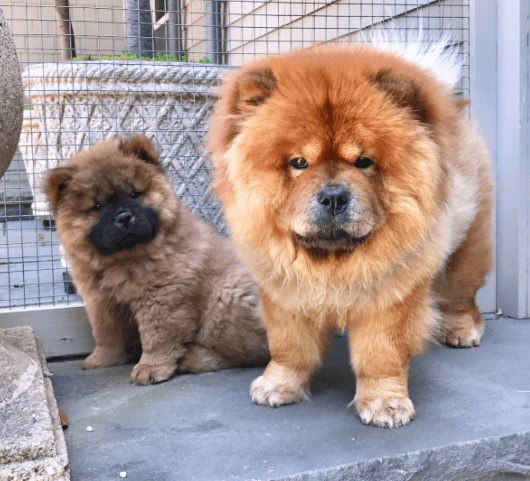
The Chow Chow is a large, thick-coated dog breed that originated in China.
They are typically 17-20 inches tall and weigh between 45-70 pounds. They come in a variety of colors, including red, black, blue, and cream.
Chow Chows are known for their distinctive lion-like mane of fur around their head and neck.
They are independent and protective, and can be aloof with strangers. They require consistent training and socialization from an early age.
Chow Chows have a thick double coat that requires regular grooming to maintain its condition.
They are also prone to certain health issues such as hip dysplasia and bloat. With proper care and training, Chow Chows make loyal and devoted companion dogs.
Health & Lifespan:
The Chow Chow, also known as Songshi Quan, is a medium-sized dog breed that has an average lifespan of around 8-12 years.
However, with proper care and regular veterinary check-ups, some Chow Chows can live well into their late teens.
Factors such as genetics, diet, exercise, and overall health can all play a role in determining a Chow Chow’s lifespan.
It’s important to provide your Chow Chow with a healthy diet, regular exercise, and preventative healthcare to ensure they live a long and happy life.
Regular vet check-ups, vaccinations, and early detection of any health issues can also help to increase the chances of a longer lifespan.
Some common health issues that Chow Chows are prone to are hip dysplasia, bloat, and skin allergies, and Entropion (inverted eyelashes).
It’s important to have regular veterinary check-ups to detect and treat these issues early on.
It’s also important to note that Chow Chows, being a medium-sized breed, need proper exercise and training to maintain their fitness and avoid obesity which can shorten their life span.
The Xiasi Dog, also known as the “Xiasi Quan” or the “Xiasi Fighting Dog,” is a medium-sized breed that originated in China.
They are a relatively new and rare breed that was developed by crossing various Chinese dog breeds such as the Chinese Shar-Pei and the
Xiasi Dogs are typically 18-24 inches tall and weigh between 45-65 pounds. They have a thick and dense coat that comes in a variety of colors, including black, brown, and gold.
They are known for being independent and protective, and are not recommended for first-time dog owners.
With proper training and socialization, Xiasi Dogs can make good companion dogs and excel in activities such as agility and obedience.
Health & Lifespan:
The Xiasi Dog, also known as the Chinese Fighting Dog, Chinese Battle Dog or Chinese Bulldog, is a medium-sized dog breed that is native to China.
Unfortunately, information about the lifespan of this breed is limited and not widely available.
However, with proper care and regular veterinary check-ups, it can be expected that the Xiasi Dog will have a lifespan of around 8-12 years, similar to other medium-sized breeds.
Factors such as genetics, diet, exercise, and overall health can all play a role in determining a Xiasi Dog’s lifespan.
It’s important to provide your Xiasi Dog with a healthy diet, regular exercise, and preventative healthcare to ensure they live a long and happy life.
Regular vet check-ups, vaccinations, and early detection of any health issues can also help to increase the chances of a longer lifespan.
It’s important to note that Xiasi Dog is not a recognized breed by major kennel clubs, and some sources may not have any information on the breed’s lifespan.
It’s also important to note that Xiasi Dog, being an ancient fighting breed, need proper socialization and training to be well-adjusted pets.
The Kunming Wolfdog, also known as the Kunming Dog, is a medium-sized breed that originated in China.
They were developed by crossing the wild gray wolf with domestic dogs in the 1940s by the Kunming Institute of Zoology in Yunnan province.
They are known for their strength, endurance and intelligence, as well as their loyal and protective nature. The Kunming Wolfdogs are typically between 60-70 cm tall and weigh between 30-40 kg.
They have a thick and dense coat that comes in a variety of colors, including black, gray, and white. They are known for being independent and protective, and are not recommended for first-time dog owners.
They require consistent training and socialization to reach their full potential. They are also prone to certain health issues such as hip dysplasia and bloat.
With proper care and training, Kunming Wolfdogs make loyal and devoted companion dogs and excel in activities such as agility and obedience.
Health & Lifespan:
The Kunming Wolfdog, also known as the Kunming Hound, is a medium-sized dog breed that is native to the Kunming region of China.
Unfortunately, information about the lifespan of this breed is limited and not widely available.
However, with proper care and regular veterinary check-ups, it can be expected that the Kunming Wolfdog will have a lifespan of around 8-12 years, similar to other medium-sized breeds.
Factors such as genetics, diet, exercise, and overall health can all play a role in determining a Kunming Wolfdog’s lifespan.
It’s important to provide your Kunming Wolfdog with a healthy diet, regular exercise, and preventative healthcare to ensure they live a long and happy life.
Regular vet check-ups, vaccinations, and early detection of any health issues can also help to increase the chances of a longer lifespan.
It’s important to note that Kunming Wolfdog is not a recognized breed by major kennel clubs, and some sources may not have any information on the breed’s lifespan.
It’s also important to note that Kunming Wolfdog, being a medium-sized breed, need proper exercise and training to maintain their fitness and avoid obesity which can shorten their life span.
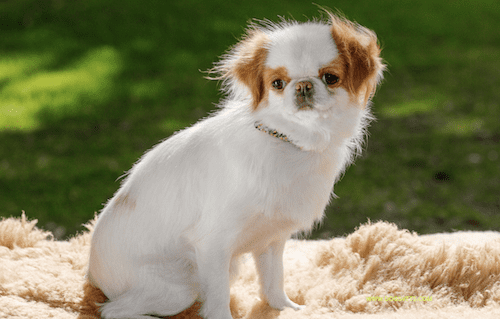
The Japanese Chin, also known as the Japanese Spaniel, is a small, toy-sized dog breed that originated in China and was later developed in Japan.
They are known for their elegant appearance, with a distinctive long, silky coat, and their friendly and affectionate nature. They are typically 8-11 inches tall and weigh between 4-8 pounds.
They come in a variety of colors, including black and white, red and white, and sable and white. They are known for being playful, intelligent and affectionate and make great companion dogs.
They have a moderate energy level and are well-suited for apartment living.
They have a long, silky coat that requires regular grooming to maintain its condition.
They are also prone to certain health issues such as patellar luxation and cataracts.
With proper care and training, the Japanese Chin makes a great companion dog and excels in activities such as obedience and agility.
Health & Lifespan:
The Japanese Chin, also known as the Japanese Spaniel, is a small, toy-sized dog breed that has an average lifespan of around 8-12 years.
However, with proper care and regular veterinary check-ups, some Japanese Chin can live well into their late teens.
Factors such as genetics, diet, exercise, and overall health can all play a role in determining a Japanese Chin’s lifespan.
It’s important to provide your Japanese Chin with a healthy diet, regular exercise, and preventative healthcare to ensure they live a long and happy life.
Regular vet check-ups, vaccinations, and early detection of any health issues can also help to increase the chances of a longer lifespan.
Some common health issues that Japanese Chin are prone to are breathing difficulties, dental problems, and chronic dry eyes, and hip dysplasia.
It’s important to have regular veterinary check-ups to detect and treat these issues early on.
It’s also important to note that Japanese Chin, being a toy-sized breed, need proper exercise and training to maintain their fitness and avoid obesity which can shorten their life span.
#14. Formosan Mountain Dog (Taiwan Dogs)
The Formosan Mountain Dog, also known as the Taiwan Dog, is a medium-sized breed that originated in Taiwan.
They were originally bred for hunting, herding and guarding, and are known for their strength, endurance, and intelligence. They are typically 17-20 inches tall and weigh between 35-45 pounds.
They have a thick and dense coat that comes in a variety of colors, including black, brown, and red.
They have a strong prey drive and are known to be very energetic and protective, making them not the best choice for first-time dog owners. They require consistent training and socialization from an early age.
They are also known for being independent and can be wary of strangers. They are also prone to certain health issues such as hip dysplasia and bloat.
With proper care and training, Formosan Mountain Dogs make loyal and devoted companion dogs and excel in activities such as agility and obedience.
Health & Lifespan:
The Formosan Mountain Dog, also known as the Taiwan Dog, is a medium-sized dog breed that is native to Taiwan.
The average lifespan of a Formosan Mountain Dog is around 12-15 years.
However, with proper care and regular veterinary check-ups, some Formosan Mountain Dog can live well into their late teens.
Factors such as genetics, diet, exercise, and overall health can all play a role in determining a Formosan Mountain Dog’s lifespan.
It’s important to provide your Formosan Mountain Dog with a healthy diet, regular exercise, and preventative healthcare to ensure they live a long and happy life.
Regular vet check-ups, vaccinations, and early detection of any health issues can also help to increase the chances of a longer lifespan.
Some common health issues that Formosan Mountain Dog are prone to are hip dysplasia, bloat, and skin allergies.
It’s important to have regular veterinary check-ups to detect and treat these issues early on.
It’s also important to note that Formosan Mountain Dog, being a medium-sized breed, need proper exercise and training to maintain their fitness and avoid obesity which can shorten their life span.
Being an ancient hunting breed, proper socialization and training is essential for them to be well-adjusted pets.
Please note that Formosan Mountain Dog is not a recognized breed by major kennel clubs, and some sources may not have any information on the breed’s lifespan.
#15. Lhasa Apso
The Lhasa Apso is a small, non-sporting dog breed that originated in Tibet. They have a long, silky coat that requires regular grooming to keep it in good condition.
They are known for being independent, but also affectionate with their owners.
Health & Lifespan:
The average lifespan of a Lhasa Apso is around 12-15 years. However, with proper care and regular veterinary check-ups, some Lhasa Apso can live well into their late teens.
Factors such as genetics, diet, exercise, and overall health can all play a role in determining a Lhasa Apso’s lifespan.
It’s important to provide your Lhasa Apso with a healthy diet, regular exercise, and preventative healthcare to ensure they live a long and happy life.
Regular vet check-ups, vaccinations, and early detection of any health issues can also help to increase the chances of a longer lifespan.
Some common health issues that Lhasa Apso are prone to are hip dysplasia, bloat, and skin allergies.
It’s important to have regular veterinary check-ups to detect and treat these issues early on.
It’s also important to note that Lhasa Apso, being a small breed, need proper exercise and training to maintain their fitness and avoid obesity which can shorten their life span.
It is recognized by major kennel clubs like AKC, UKC, and KC.
In conclusion, China is home to many unique and fascinating dog breeds, each with their own distinct characteristics, appearance, and personality.
Tips to Know about Chinese Dog Breeds
Training and socialization:
Chinese dog breeds are known for their independence, intelligence and protective nature, therefore, they require consistent training and socialization from an early age. This will help them learn proper behavior and how to interact with humans and other animals.
Grooming:
Many Chinese dog breeds have thick and dense coats that require regular grooming to maintain their condition and prevent matting. This includes brushing their coat at least once a week, and trimming or clipping their coat as needed.
Diet and exercise:
Chinese dog breeds have varying energy levels and exercise needs, but all breeds need a healthy diet that provides them with the necessary nutrients.
Make sure to provide them with a diet that is appropriate for their size, age and activity level.
Health:
Chinese dog breeds are prone to certain health issues, such as hip dysplasia and bloat, therefore, it’s important to have regular veterinary check-ups to catch and treat any health issues early on.
Patience and consistency:
Chinese dog breeds can be stubborn and independent, so it’s important to have patience and consistency when training and interacting with them. This will help them understand what is expected of them and build trust and a strong bond with their owners.
Research:
Before getting any Chinese dog breed, it’s important to do your research and learn about the breed’s characteristics, temperament, grooming needs, and any potential health issues. This will help you understand the breed better and determine if they are the right fit for you and your lifestyle.
Respect their heritage: Chinese dog breeds have a rich history and cultural significance, it’s important to respect and appreciate their heritage and origins.
5 Chinese Dog Breeds to Avoid
It’s important to research and choose a dog breed that is well-suited for your lifestyle, personality and living conditions. Some Chinese dog breeds may not be suitable for certain individuals or households.
For example:
Chinese Shar-Pei: This breed is known for being independent and protective, and may not be the best choice for first-time dog owners or those without experience in training and socialization.
Chinese Chongqing Dog: This breed is a large, powerful dog that was originally bred for hunting and guarding, and may not be well-suited for households with small children or other pets.
Chinese Siamese Fighting Dog: This breed was originally bred for fighting, and may not be suitable for households without experience in training and socialization. They can be dangerous if not properly trained and socialized.
Formosan Mountain Dog: This breed is known to be very energetic, protective and can be wary of strangers, making them not suitable for households with small children or other pets.
Kunming Wolfdog: As they were developed by crossing the wild gray wolf with domestic dogs, they can be quite challenging to train and socialize, and may not be suitable for first-time dog owners.
It’s important to note that all breeds have their own unique characteristics and needs, and with proper training, socialization, and care, any dog can make a great companion.
It’s also important to remember that each individual dog is unique, and their behavior and personality may not be entirely determined by their breed.
Therefore, getting to know the individual dog, and understanding their needs is the most important step in responsible dog ownership.
Questions & Answers About Chinese Dog Breeds
What are some of the characteristics of the Shih Tzu breed?
3The Shih Tzu is a small, toy-sized dog that is known for its long, luxurious coat. They are typically 9-10 inches tall and weigh between 9-16 pounds.
They come in a variety of colors, including black, white, brown, and gold. Shih Tzu’s are known for being friendly, outgoing, and affectionate. They make great companion dogs and are well-suited for apartment living.
What is the height and weight of the Chinese Shar-Pei breed?
The Chinese Shar-Pei is a medium-sized dog breed that is typically 18-20 inches tall and weighs between 45-60 pounds.
Are Chinese Crested dogs good with children?
Yes, Chinese Crested dogs are known for being energetic, affectionate, and good with children.
What were Chinese Foo Dogs originally bred for?
Chinese Foo Dogs were originally bred as guard dogs. They are known for being protective and loyal to their owners.
What are some of the characteristics of the Chinese Meizhou Dong Dog breed?
The Chinese Meizhou Dong Dog is a medium-sized breed that is known for its courage, strength, and endurance. They were originally bred for hunting and herding, and make excellent watchdogs.
Are Chinese Siamese Fighting Dogs good companion dogs?
Yes, with proper training and socialization, Chinese Siamese Fighting Dogs can make great companion dogs. They were originally bred for fighting but can make great pets with the right training and socialization.
Fact Check
We hope you enjoyed reading this article. What are your thoughts on the topic?
“At [Dogsvets.com], our goal is to bring you the most accurate and up-to-date information on all things pet-related.
If you have any additional insights or would like to advertise with us, don’t hesitate to get in touch.
If you notice any errors or discrepancies in our content, please let us know so we can correct them.
We welcome your feedback and encourage you to share this article with others.”
Post Views: 22,796




